Spiral galaxy NGC 4254 is among the thousands of galaxies living and dying by the extreme physical processes in the Virgo Cluster. The galaxy is seen here in radio from ALMA with molecular gas in red/orange and optical from Hubble Space Telescope with stars in white/blue.
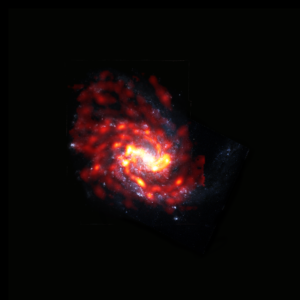
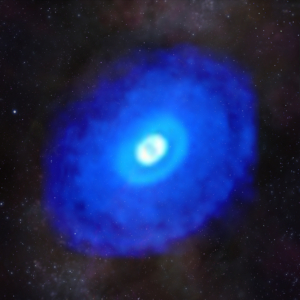
Hydrogen Cyanide in HD 163296
This composite image of ALMA data from the young star HD 163296 shows hydrogen cyanide emission laid over a starfield. The MAPS project zoomed in on hydrogen cyanide and other organic and inorganic compounds in planet-forming disks to gain a better understanding of the compositions of young planets and how the compositions link to where planets form in a protoplanetary disk.
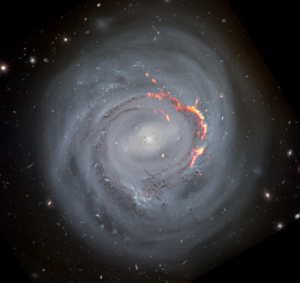
Ram Pressure Stripped Galaxy NGC4921
Shown here in composite view, ALMA data (red/orange) reveals filament structures left behind by ram pressure stripping in a Hubble Space Telescope optical view of NGC4921. Scientists believe that these filaments are formed as magnetic fields in the galaxy prevent some matter from being stripped away.
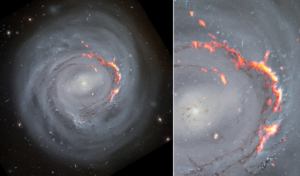
Zooming in on Ram Pressure Stripping in Galaxy NGC4921
This side-by-side composite shows ALMA (red/orange) data laid over Hubble Space Telescope (optical) images of NGC4921. A new study of the spiral bar galaxy revealed filament structures similar to the Pillars of Creation but significantly larger. These structures are caused by a process known as ram pressure stripping, which pushes gas out of galaxies, leaving them without the material needed to form new stars.
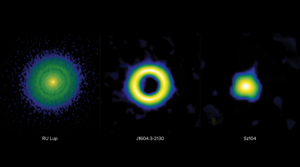
Protoplanetary Disks Side-by-Side Comparison
Protoplanetary disks are classified into three main categories: transition, ring, or extended. These false-color images from the Atacama Large Millimeter/submillimeter Array (ALMA) show these classifications in stark contrast. On left: the ring disk of RU Lup is characterized by narrow gaps thought to be carved by giant planets with masses ranging between a Neptune mass and a Jupiter mass. Middle: the transition disk of J1604.3-2130 is characterized by a large inner cavity thought to be carved by planets more massive than Jupiter, also known as Super-Jovian planets. On right: the compact disk of Sz104 is believed not to contain giant planets, as it lacks the telltale gaps and cavities associated with the presence of giant planets.
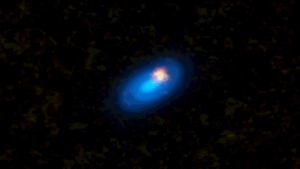
Young Star Elias 2-27 Gas Velocity Emissions
Using gas velocity data, scientists observing Elias 2-27 were able to directly measure the mass of the young star’s protoplanetary disk and also trace dynamical perturbations in the star system. Visible in this animation are the dust continuum 0.87mm emission data (blue), along with emissions from gases C18O (yellow) and 13CO (red).





